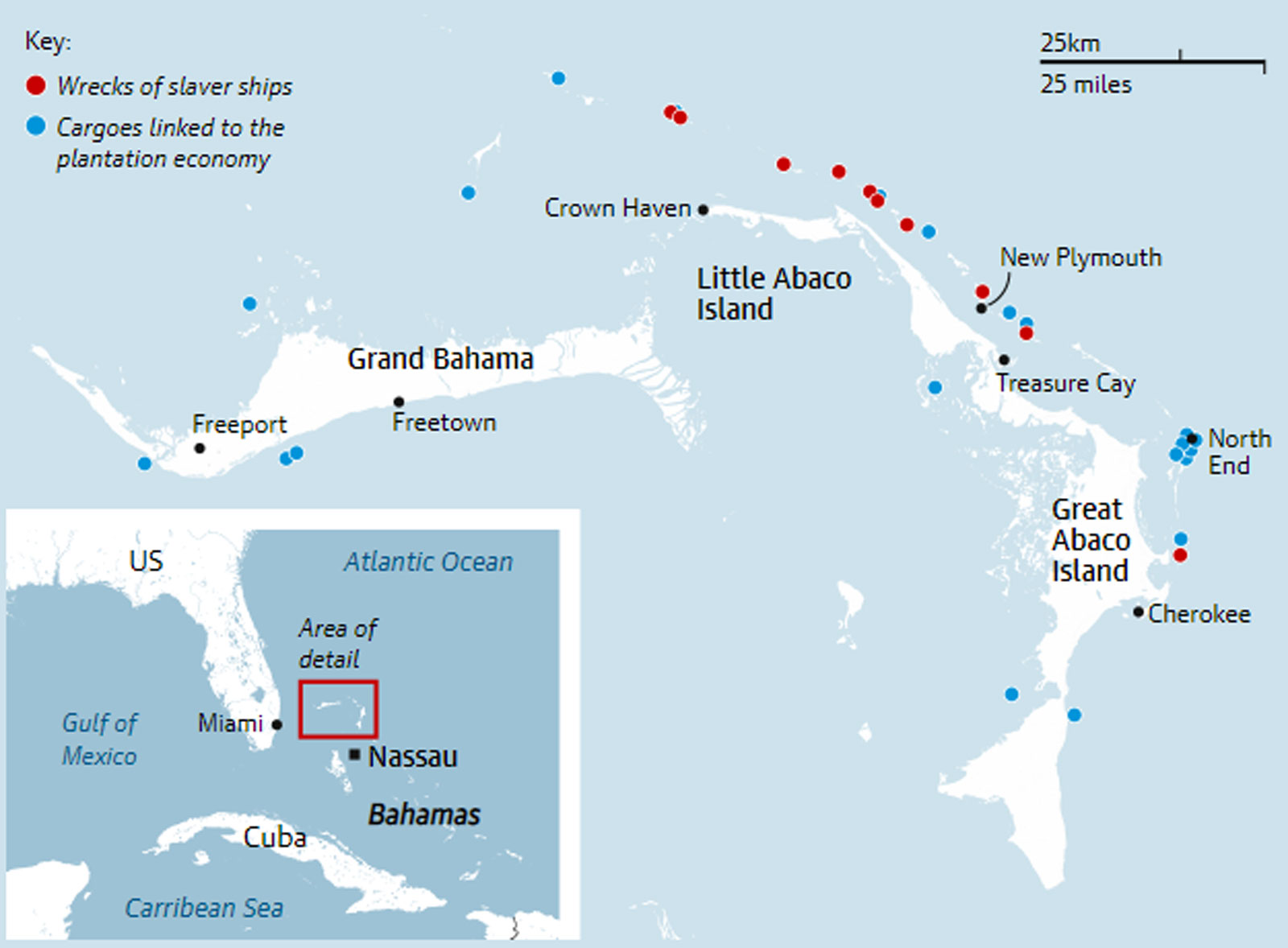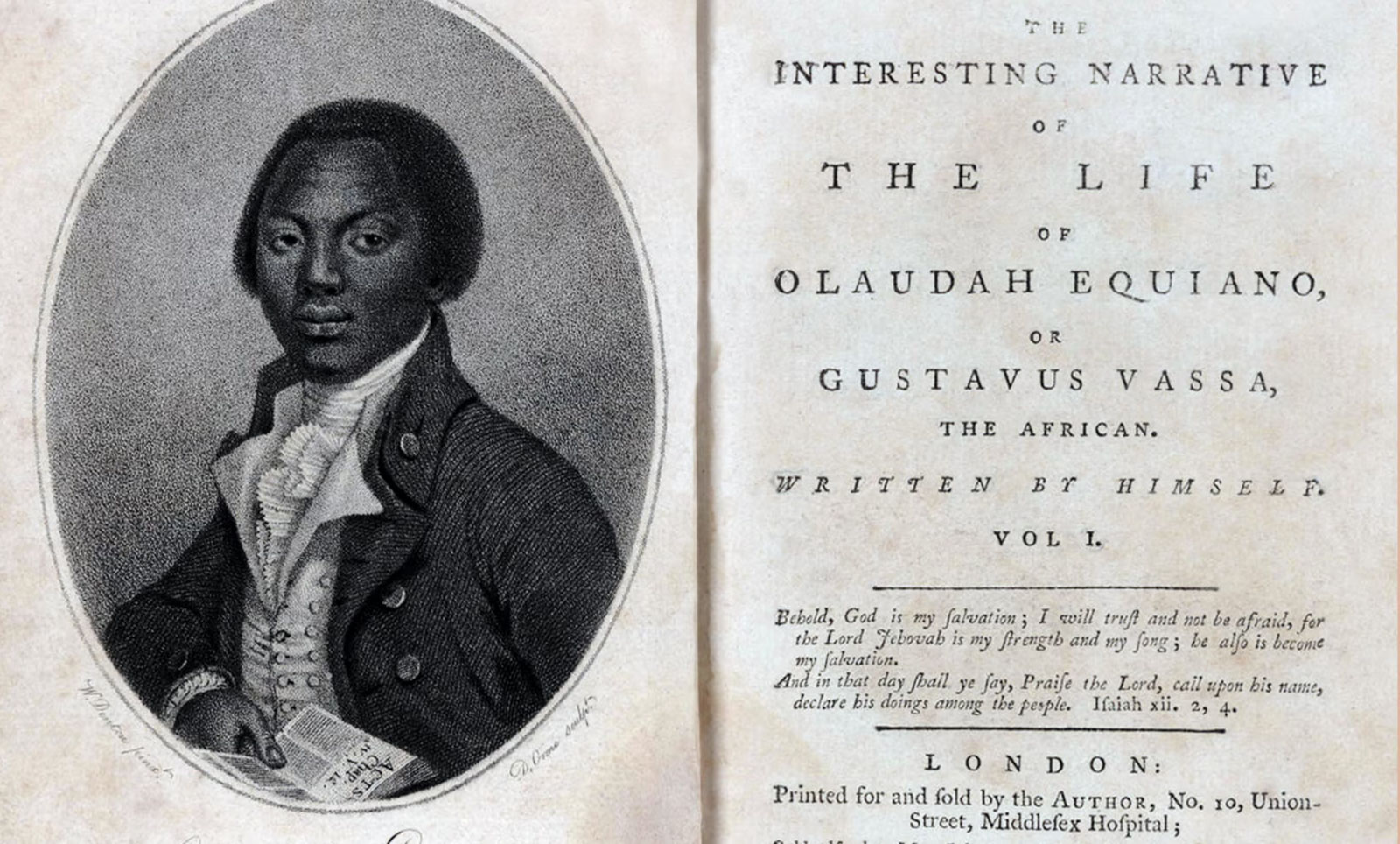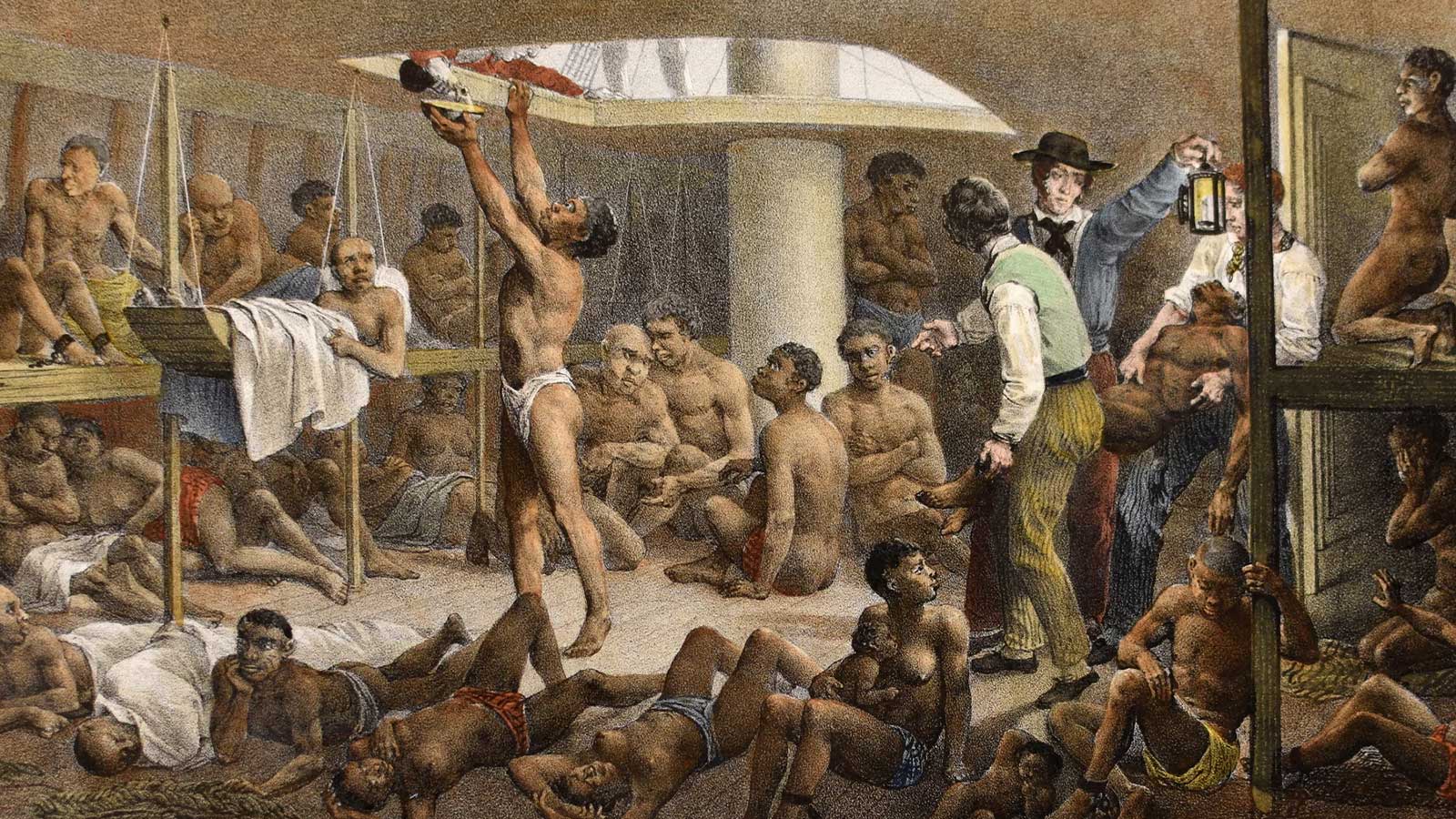Largest cluster of sunken vessels from the 18th and 19th centuries have been identified, bearing ‘silent witness’ to the colonial past.
By Dalya Alberge, The Guardian —
They were the ships that carried enslaved Africans on hellish transatlantic voyages through the 18th and 19th centuries, with up to 400 in a single vessel. Now the wrecks of 14 ships have been identified in the northern Bahamas, marking what has been described by a British marine archaeologist as a previously unknown “highway to horror”.
The fate of the African men, women and children trafficked in their holds is unknown, but if a vessel was sinking, they were often bolted below deck to allow the crew to escape.
Sean Kingsley told the Observer that this extraordinary cluster of wrecks reveals that enslavers had used the Providence Channel heading south to New Providence, Cuba and around to New Orleans in the Gulf of Mexico.
These ships, which date from between 1704 and 1887, were mostly American-flagged, and profited from Cuba’s sugar and coffee plantations, where enslaved Africans faced a life of cruelty.
Kingsley said: “Cuba pretended to accept rules to end the slave trade, but pursued the largest trafficking [of enslaved people] in the world, making massive profits in sugar cultivation.”
 The wrecks have been identified during research by the Bahamas Lost Ships Project, managed by Allen Exploration, founded by Carl Allen, a philanthropist and explorer with two passions – the Bahamas and its sunken past.
The wrecks have been identified during research by the Bahamas Lost Ships Project, managed by Allen Exploration, founded by Carl Allen, a philanthropist and explorer with two passions – the Bahamas and its sunken past.
The project is compiling an inventory of every shipwreck in the Bahamas. Through historical sources, it has identified 596 wrecks in the Greater Abaco region, dating from 1657 onwards, when these sea lanes began to witness substantial maritime traffic.
Kingsley is one of five co-authors of a report, published this weekend to coincide with Black History Month in the US. Entitled Greater Abaco’s Shipwrecked Echoes of the Caribbean Plantation Economy, it describes the wrecks of slaver ships as “silent witnesses to a period of history that the world would rather forget but that must be respected to bear witness to the horrors and memories of the colonial past”.
It notes that the number of the trafficked humans ranged from 15 people on the Atalanta, heading from Charleston for New Orleans in 1806, to 400 on an American schooner, the Peter Mowell, which sank in 1860.

The autobiography of Olaudah Equiano. Photograph: Universal History Archive/UIG/Getty Images
Another was launched in England in 1806 before being destroyed in a severe storm in 1820, 1.5 miles off western Abaco. Its cargo included clothing and blankets, thought to have been purchased for a sugar plantation factory.
In a section on the fate of shipwrecked Africans, the report notes their “unimaginable horrors”, with many never even having seen the sea before: “Now, closing in on the end of their harrowing journeys… they were forced to endure a totally new experience – the terror of shipwreck. Unlike crews free to swim for it or to take to a ship’s boat, the enslaved were often locked and bolted below deck when a vessel foundered to ensure the crew got optimum space while escaping in the ship’s boat or were not attacked amidst the panic…
“More often than not, the fate of the enslaved casualties went unrecorded. To the captains commanding the voyages and the owners of the human cargoes, their drowning was an economic inconvenience that was not assessed in human terms.”
One of the wrecks was the ship on which the formerly enslaved Olaudah Equiano sailed in 1767. Kidnapped from his Igbo village in Nigeria, he had been trafficked to Barbados aged 11. Having eventually bought his freedom, he was preparing for a new life when the ship on which he was travelling was lost. He survived the disaster and went on to become a leading voice in the abolition movement.
Michael Pateman, director of the Bahamas Maritime Museum, said: “Nothing was worse than ending up in the sugar plantations of Cuba.”
Allen added: “Of all the extraordinary cargoes sunk off the Abacos, from shipments of locomotives and ice to gold and silver, brandy and tea, none hit you in the chest like the trafficking of Africans. It’s a tale that needs to be remembered. History and archaeology let us give new life to the memories using physical evidence that nobody can ignore.”
While all wrecks are the property of the government of the Bahamas, Allen Exploration sponsors the Bahamas Maritime Museum in Freeport, which displays any finds recovered from the seabed.
The new report will be published in the Ocean Dispatches series by the museum.
Source: The Guardian
Featured image: Conditions on a slave ship, as imagined by Johann Moritz Rugendas in 1830. Photograph: Museo Itaú Cultural















